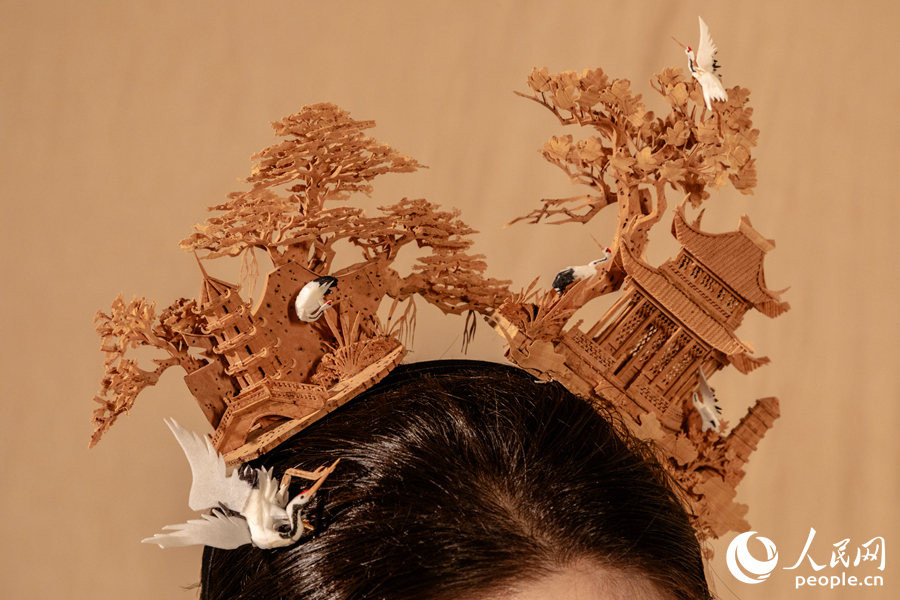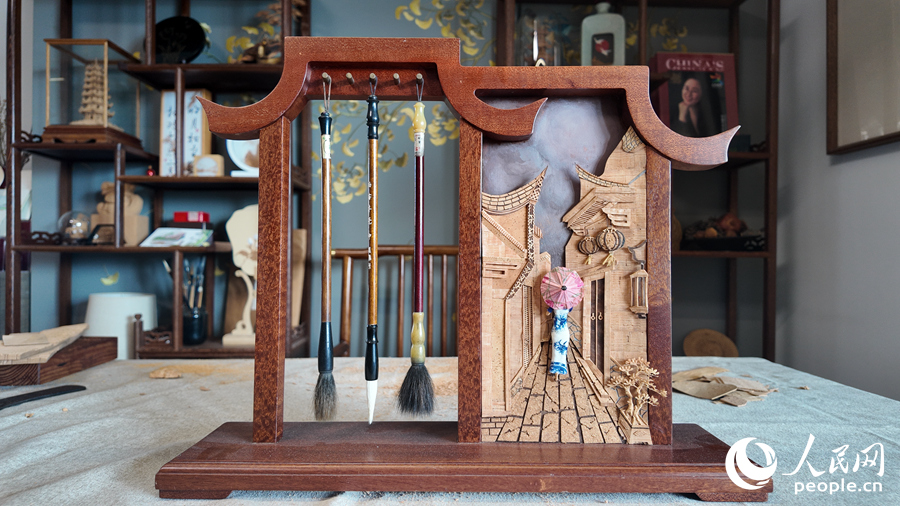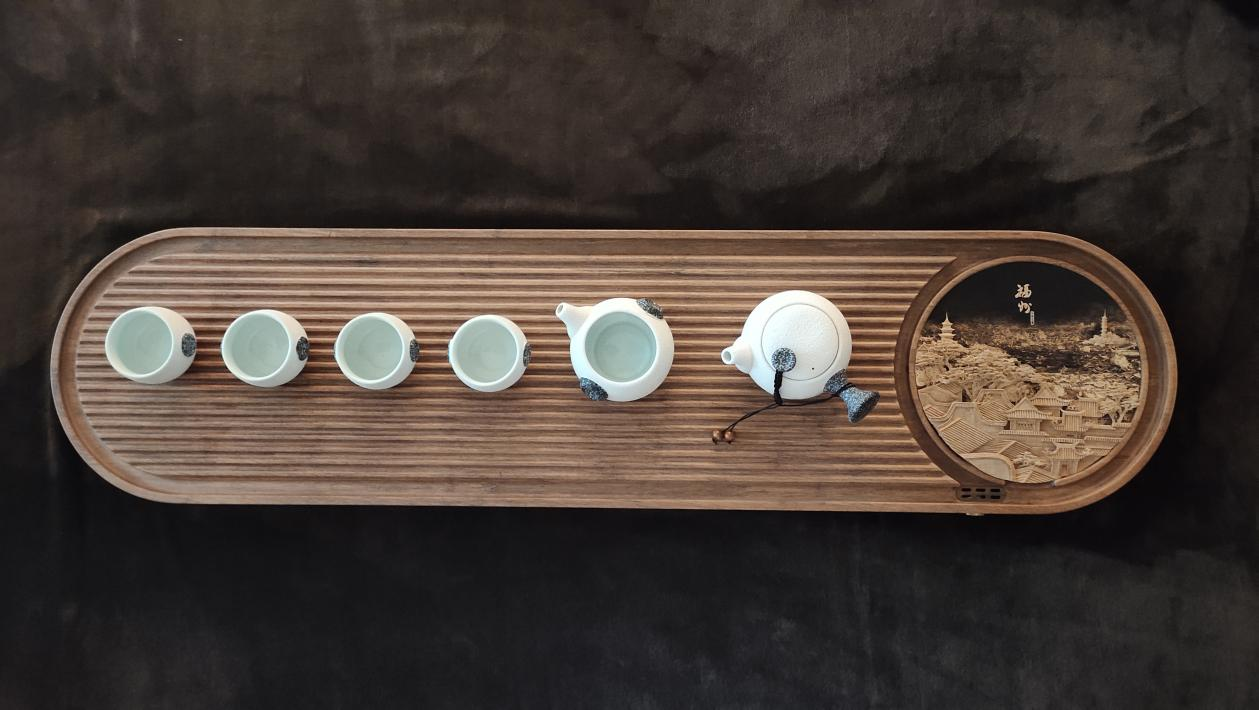




- BRNN
- BRI News
- BRNN News
- Database
Official Documents Polices and Regulations
Inter-government Documents International Cooperation BRI Countries
Business Guide Economic Data BRI Data
Trade
Investment Projects Latest projects
Cases - Content Pool
Recently, in Fuzhou, capital of southeast China's Fujian Province, "cork carving hair accessories" have gone viral on social media, captivating locals and tourists alike.
Cork carving, known locally as "wood painting," is a traditional handicraft originating from Fuzhou. Developed in the early 20th century, it was inscribed on China's National Intangible Cultural Heritage List in 2008. Artisans use cork from oak trees as their canvas, replacing brushes with knives to sculpt vast landscapes into delicate frames.
To complete a single cork artwork requires a meticulous, multi-step process, including material selection, sketching, slicing, carving, and assembling. The finest components measure just 0.1 micrometer thick, with masterworks requiring over 10,000 micro-carved fragments.
Under the blade, artisans etch not only intricate scenes of pavilions and cranes but also generations of Fuzhou craftsmen's aesthetic devotion. As cork art leaps from display cases to adorn hair—transforming from "display-only" to "wearable heritage"—it comes alive in our everyday world. Embracing modern life, this ancient craft draws vitality from modernity, ensuring its timeless legacy thrives.

A photo shows cork carving hair accessories. (People's Daily Online/Yang Haoyu)

A photo shows a pen holder infused with cork carving motifs. (People's Daily Online/Yang Haoyu)

A photo shows a tea tray infused with cork carving motifs. (Photo provided bby the interviewee)

Tel:86-10-65363107, 86-10-65368220, 86-10-65363106